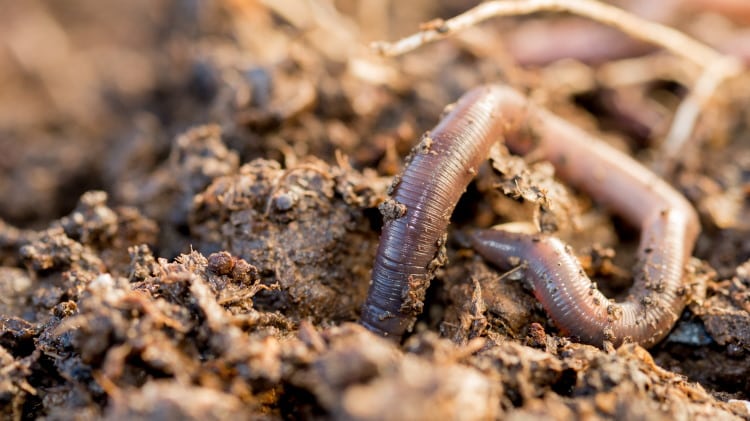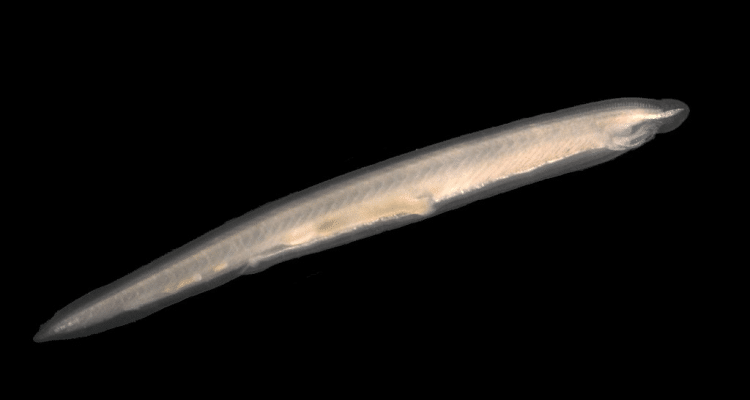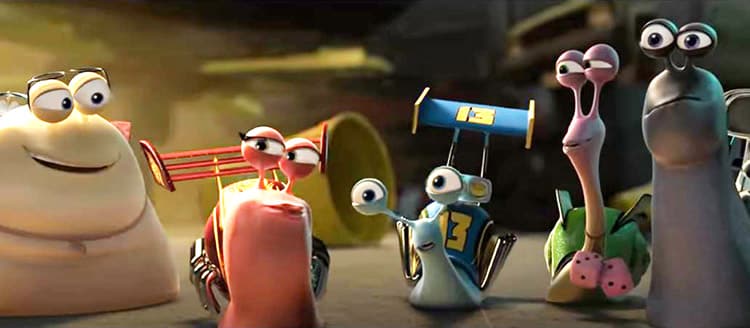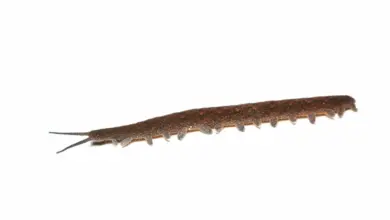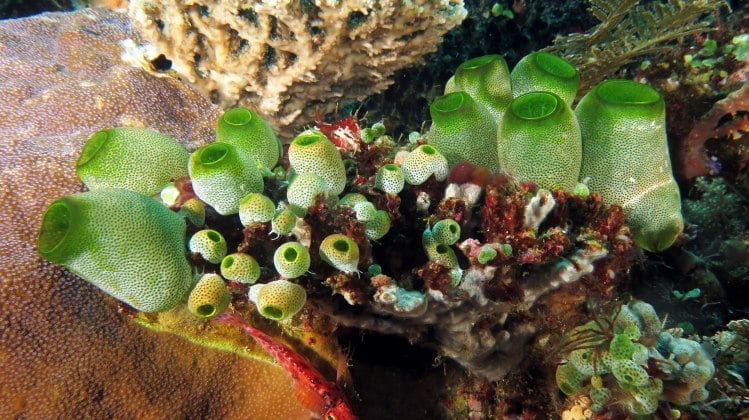As cruel as it sounds, the saying “eat or be eaten” is established in the animal world.
However, eating doesn’t precisely prevent you from being eaten – most of the world’s predators, no matter how powerful or skillful, can end up becoming prey themselves.
The same is true for velvet worms – all 230 known species.
By its feeding habits and hunting effectiveness, the velvet worm is probably equal to a dragon of an invertebrate world. This peaceful-looking predator, which is neither a worm, a centipede, or a slug but belongs to a special invertebrate phylum called Onychophora, quietly stalks its prey at night.
Instead of breathing fire, it shoots out sticky slime that prevents the poor arthropod from moving. Then it bites, injects it with saliva, and sucks the liquified insides. Yikes.
However, the velvety Onychophorans have their nemesis too. The size and the meatiness of the velvet worm make them an attractive snack, and there are plenty of creatures willing to take a bite. In fact, some are thought to be specialized in feeding on velvet worms in particular.
Let’s discover some of the best-known velvet worm predators.
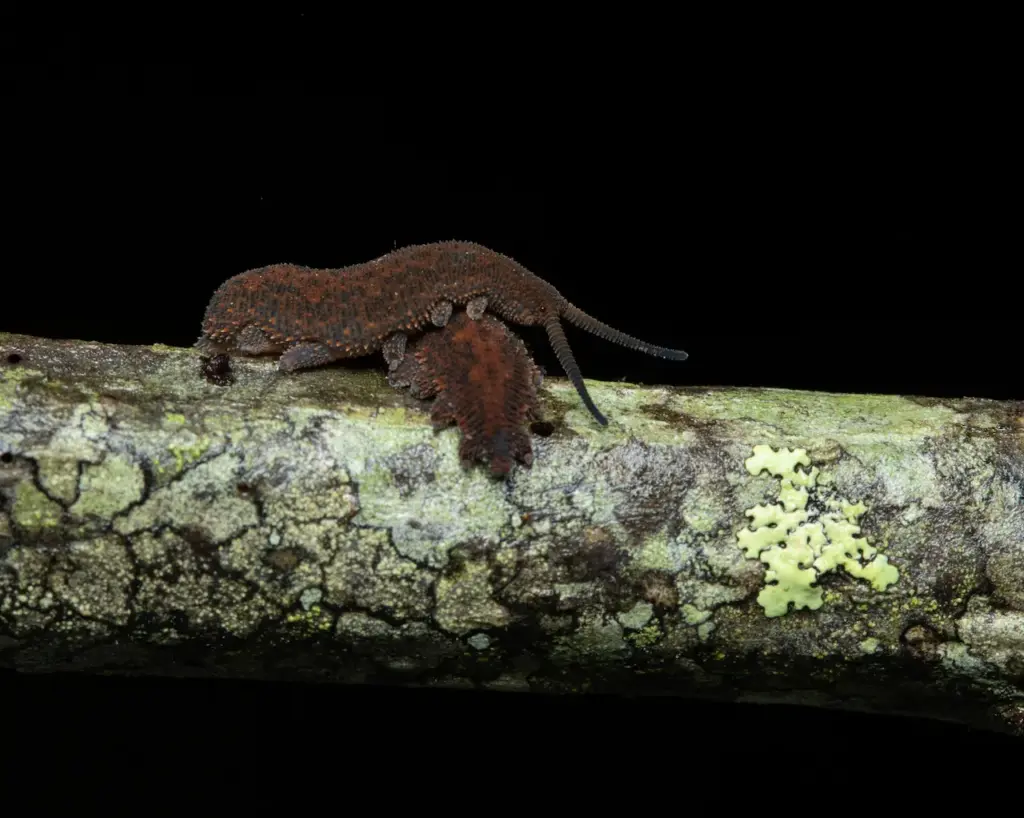
What Are the Predators of Velvet Worms?
Although velvet worms are feisty and good at defending themselves, they do fall prey to certain animals. Known predators of velvet worms are certain birds, mammals, snakes, centipedes, and spiders.
Birds – Clay-colored thrush (Turdus grayi)
Clay-colored Thrush (Turdus grayi) is a central and South American bird whose range spans from southern Texas to northern Columbia. It got its name due to its drab coloration – olive-brown upper parts, lighter throat with brown streaks, and pale brownish underparts.
A common avian inhabitant of its range, it occupies open and semi-open habitats and is often found both in the wild and in urban environments.
Despite its drab color, this bird is far from uninteresting. It is the national bird of Costa Rica. Their song in May is said to announce the rainy season.
In Panama, it is one of the rare species known to nest during the unfavorable dry season, supposedly due to less pressure from predation.
This thrush is an omnivore and forages for berries, insects, and small invertebrates. While searching for the meaty invertebrate prey, it will also pick up velvet worms in case they share their range.
A Polish ornithologist Andrzej Dyrcz was the first to observe feeding onychophorans to nestlings in 1982 in Panama.
According to the available sources, the Clay-colored thrush is not specialized in feeding on velvet worms but opportunistically includes them in the diet along with other invertebrates – unlike our next predator.
Snakes – Hemprichi’s Coral Snake (Micrurus Hemprichii)
Hemprichii coral snake (Micrurus hemprichii) is a species of coral snake found in the Northwestern Amazon – Andean foothills of Peru, Colombia, and Ecuador.
They have a characteristic banded body with a black base and yellow and white bands. Like other coral snakes, this one is also venomous, but it lives a secretive lifestyle and rarely runs into humans – thus, the bites are rare (though not unheard of).
Because of its venom, Hemprichi’s coral snake is an efficient hunter. It is probably the only animal thought to be specialized in feeding on velvet worms.
However, their prey preferences are not fully established, so the hypothesis about specialization is to be taken with caution.
What can be said fairly certain is that this is the predator most likely to consume velvet worms. Why is that?
Well, the Hemprichi’s coral snake is specialized in feeding on elongated animals. Besides Onychohorans, they are known to feed on Leposoma lizards, worm lizards (Amphisbaenia), and even other snake species.
Of course, they have a better chance of encountering prey if they share micro-habitats – secretive places such as hollow and rotten logs and leaf litter. The frequent presence of velvet worms in Hemprichi’s coral snake diet is likely due to the same ecological preference for dark, moist habitats – and simply the high chance of running (or slithering!) into them.
Spiders (Ctenus spp.)
If you know something about the velvet worm diet, you probably know that spiders are a regular part of the Onycophoran menu.
However, sometimes the opposite is the case. Some actively hunting spiders can hunt down a velvet worm.
In the documented cases in Colombia and Costa Rica, wolf spiders from the genus Ctenus made lunch out of velvet worms of the genus Epiperipatus.
In both cases, the worm was already subdued, and the spider was feeding on it, so the researchers missed out on the hunt itself. Still, the worms seem to have failed to shoot their slime in self-defense, and the spiders managed to bite and paralyze them.
The researchers also make an interesting statement – since the spider venom was effective, the velvet worm nerves and muscles must be biochemically similar to those of insects.
Centipedes
The possible sight of a velvet worm and centipede fighting seems like a scene from Godzilla vs. Kong movie.
The two voracious invertebrate predators with similar body plans occasionally include each other on their menus, according to the literature – though there is not much physical evidence of these encounters.
Still, both animals share the same habitats and lifestyles, leading to inevitable predation attempts from both sides.
Mammals – Rats and Hedgehogs
In New Zealand, hedgehogs and rats occasionally eat native velvet worms (peripatus or ngaokeoke as the Kiwis call them).
That is no wonder considering that hedgehogs are insectivores that hunt at night, and rats will eat just about anything as primarily nocturnal opportunistic omnivores.
However, it should be mentioned that both hedgehogs and rats are introduced species. Therefore, they are not natural predators of New Zealand’s velvet worms – and there are about 30 species.
In a similar fashion, only the non-native New Zealand birds are reported to feed on local Onychophoras.
Conclusion
The list of velvetworm predators is likely far from complete. These velvety little beasts are secretive and have limited ranges; because of that, they are rarely observed in the wild – finding them is quite an effort for the researchers, despite the fact they know where to look. That is why we can assume that the sight of something feeding on a velvet worm is even rarer.
The documented anecdotal observations are the best we have to get an idea about what predators may feed on velvet worms. However, it is safe to assume that many other predatory species that are too big to be affected by velvet worm slime and inquisitive and nosy enough to find them can eat velvet worms.
We may feel sorry for such a cute critter to be eaten, but natural velvet worm predators are an integral part of the ecological balance. Instead, if we are fond of Onycophorans, we should feel more worried and outraged about the ongoing destruction of their habitats – the biggest threat to their survival.
Resources
Franco R, Nájera J.M. (2016) Inverted roles: Spider predation upon Neotropical velvet worms (Epiperipatus spp.; Onychophora: Peripatidae)
Nájera, J.M., Barrientos, Z. Aguilar, F. (1993) Behavior of Epiperipatus biolleyi (Onychophora: Peripatidae) under laboratory conditions
New Zealand peripatus/ngaokeoke. New Zealand Department of Conservation
Masseli G., et al. (2018) Micrurus albicinctus (White-banded Coral Snake) and Micrurus hemprichii (Hemprich’s Coral Snake). Diet and Predation. Herpetological Review 49(1):134. March 2018
Clay-colored Thrush. Field Guide To Birds of North America. whatbird.com
http://identify.whatbird.com/obj/763/_/Clay-colored_Thrush.aspx
Wright, J. Onychophora velvet worms. Animal Diversity Web

